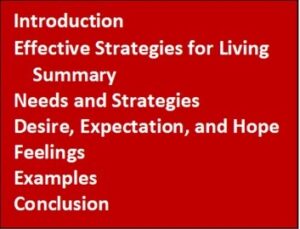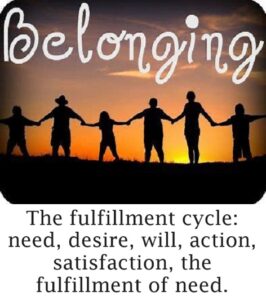Avoiding Pain with Effective Strategies for Living. Pain and Suffering Part II
INTRODUCTION
In the last Letter we began our exploration of pain and suffering with some definitions and basic concepts. In this Letter we explore the possibilities of avoiding and reducing pain and suffering with effective strategies for living. Effective strategies for living start with knowing what our needs are and developing strategies for fulfilling these needs. Unfulfilled needs create frustration and a painful longing for fulfillment, a longing that can sometimes last a lifetime. Our desires are the specific ways that we fulfill our needs and with hope and expectation we develop strategies for satisfying our desires. If our desires are unsatisfied we experience the pain of frustration. If our hopes and expectations are unfulfilled we experience disappointment and frustration and sometimes anger. Effective strategies for living includes learning how to tolerate and to learn from pain, disappointment, and frustration. Effective strategies for living are also guidelines for living the best life we can in addition to being useful ways to avoid and reduce pain and suffering.
Point of Empowerment: We can experience satisfaction and fulfillment or the pain of disappointment and frustration. We avoid pain and suffering by fulfilling our needs.
STRATEGIES FOR EFFECTIVE LIVING SUMMARY
- Know what your needs are and seek to fulfill them.
- Know your desires and hopes. Seek to satisfy your desires and fulfill your hopes.
- Use expectation to strengthen your desire and hope.
- Be aware of frustration and disappointment. Learn to tolerate these inevitable feelings.
- Hear the messages of frustration and disappointment. Act on what you learn to improve your strategies.
Let’s explore these ideas.
NEEDS and STRATEGIES
At our core, what we want is the fulfillment of our needs. Our needs are survival, safe/security, belonging/loving, self-esteem, to create/produce/know, self-actualization, and beauty/mystery/transcendence. Our needs demand to be fulfilled. As we live we cannot avoid these demands. Think about and understand what these needs mean to you. Also, Chapter 7 of The Operating Manual for the Self contains an extensive explanation and exploration of our needs. Follow the link to Chapter 7, posted on the IIFSD.org website. https://iifsd.org/topics-for-empowerment/human-needs/
create/produce/know, self-actualization, and beauty/mystery/transcendence. Our needs demand to be fulfilled. As we live we cannot avoid these demands. Think about and understand what these needs mean to you. Also, Chapter 7 of The Operating Manual for the Self contains an extensive explanation and exploration of our needs. Follow the link to Chapter 7, posted on the IIFSD.org website. https://iifsd.org/topics-for-empowerment/human-needs/
Understanding what your needs are is the first step. All our behavior—our thinking, feeling, and doing (acting) are designed to fulfill our needs. Using our ability to think and to feel we develop specific strategies to fulfil our needs. Strategies are plans for action. We use our will and our ability to act to put our strategies into action. We experience the results of our strategies and actions.
Point of Empowerment: The cycle of need fulfillment is need, desire, strategy, will, action, satisfaction, fulfillment of need.
Pleasure tells us that we are fulfilling an aspect of our needs. We are succeeding and can get more of what we want by repeating our strategy. There are many pleasurable feelings that accompany fulfilling our needs, feelings like safe, secure, relaxed, loved, loving, connected, belonging, uplifted, inspired, happy, joyful, excited, intrigued, satisfied, fulfilled, or the self-liking of self-esteem. There is a long list of the pleasurable feelings that life offers to us as we fulfil our needs.
There is pain in unfulfilled needs. Also, the chronic pain of a persistently unfulfilled need creates suffering. Pain and suffering tell us that we are attempting to fulfill a need but not succeeding. We are failing and should change our approach, develop a new strategy. (Unfulfilled childhood needs generate a painful longing that can last a lifetime.) Of course things get much more complicated as we seek to understand the specifics of a situation and try to figure out if our strategy for getting what we want is working or not. As we live life other feelings like happiness, excitement, joy or anxiety, sadness, anger, feeling defeated, or discouraged are triggered by specific situations. These feelings contain additional information about the success or failure of our strategies for fulfilling our needs.
DESIRE, EXPECTATION, AND HOPE
Our desires are the specific things we want to fulfill our needs. The ability to desire is an intrinsic (built in) ability that we have. Desire is an inevitable aspect of living. Accompanying desire is expectation and hope. We expect with varying degrees of certainty that the things we desire will come to us. We hope that the future will bring the satisfaction of our desires. (A problem occurs when we are reluctant to let go of unrealistic hopes. We do this because we don’t like feeling hope-less, having less or no hope.) Desire, expectation, and hope are natural aspects of living. Natural means automatic and appropriate. Automatic is happening spontaneously without having to plan it. Appropriate is comfortably fitting into any situation that arises. Of course along with spontaneous desire, expectation, and hope, we can deliberately create desire, expectation, and hope. But desire and expectation bring frustration when they are unsatisfied and hope brings disappointment when it is unfulfilled. Since desire, expectation, and hope are inseparable from life, frustration and disappointment are also inevitable aspects of our experience since we do not get everything we desire, expect, and hope for. Frustration and disappointment are two basic feelings that are layered on top of pain so we experience them as painful.
Along with pain, suffering leads to frustration and disappointment, sometimes immense frustration and disappointment. When we try to end our suffering and cannot, having no hope for a future without suffering, we feel great disappointment, anguish, and hopelessness. Rage can develop and in extreme cases suicide can occur.
Point of Empowerment: Since frustration and disappointment are inescapable at times, effective strategies for living include learning to tolerate these painful feelings and to learning to hear the messages they bring us about our strategies for fulfilling our needs.
It is important to know what your desire is in any situation and can be useful to know how that desire fulfills a need. Knowing what your desire is will help you to develop a strategy to satisfy your desire or to identify the strategy that you are currently.
Practice: Recognize a successful strategy so you can repeat it. Discover why a failing strategy is not working. Design and put into action a new and hopefully a more effective strategy.
If you don’t fulfill your needs and satisfy your desires you will have the pain of unfilled needs and the frustration of unsatisfied desire. Less fulfillment more pain. Less satisfaction more frustration. Or more fulfillment, less pain. More satisfaction, less frustration.
Practice: Learn to tolerate the painful feelings of frustration and disappointment by acknowledging their existence, recognizing what they are, and physically and emotionally relaxing into them. Then understand the messages they communicate to you, messages that your strategies for fulfilling your needs are not working.
FEELINGS
What is necessary to accomplish this practice? A feeling is not hard to acknowledge if we focus awareness on our body and notice the sensation that is present. We then relax our body sinking into the feeling, experiencing it, and noticing that it ends on its own. It completes the cycle of trigger, experience, and dissipate. We know how to interpret that sensation, to identify the specific feeling we are experiencing. If we don’t recognize the feeling we can ask, “What must I be feeling in the situation?” An answer will very often “pop up,” emerge into awareness, either immediately or a little later. We can then interpret the meaning of the feeling—what it tells us about our life.
Sometimes we are unwilling to feel our feelings because we are afraid of them. We use defense mechanisms to block the experience of a feeling. The first defense mechanism we use is denial, often followed by a secondary mechanism like projection, for example. Denial: “I am not frustrated and angry.” Projection: “You are the one that feels this way not me.” We can find it difficult to feel frustration or disappointment if we feel anger instead. We often feel angry when frustrated or disappointed, angry at the person or situation that “caused” our frustration or disappointment. This anger is often blaming someone for our painful feelings because he or she has not given us what we want. We skip frustration and/or disappointment and go straight to anger. Here anger is a defense mechanism against frustration and disappointment. The anger is an avoidance of our frustration and/or disappointment and is a childish tantrum. We need to let go of our anger and focus on the frustration and/or disappointment, understanding why we feel this way by asking ourselves what happened to trigger these feelings. Of course anger is entirely appropriate at times when someone is trying to hurt us. It is a protective response.
Point of Empowerment: Effective strategies for living includes taking full responsibility for our frustration and/or disappointment by taking ownership of it, “This frustration and/or disappointment belongs to me. They are my reactions to this event.”
EXAMPLES
Let’s look at some examples of how this works.
- My desire is to make a new friend. My strategy is to approach new people I meet who seem friendly and speak to them. I follow through with further contact if our first encounter seems to go well. This desire satisfies my need for belonging and self-actualization.
- My desire is to make a new friend. My strategy would be to approach and speak to new people, but I can’t bring myself to do that. I feel frustrated and lonely. At times I feel hopeless and disappointed in myself. Though my strategy seems good I cannot put it into practice. My needs are unfulfilled and I feel frustrated, angry, and hurt. I have blockages that I need to overcome.
- My desire is to make a new friend. My strategy is to stand next to a person that seems interesting and wait for him/her to speak to me. This does not happen. They don’t speak to me. I feel frustrated, disappointed, and lonely. At times I feel hopeless and disappointed in myself. I don’t know what is wrong but I suspect that my strategy to make a new friend is faulty. I will try to develop a new strategy to satisfy my desire. But first I have to examine the beliefs that give rise to the dysfunctional strategy, beliefs about myself and the world. One such belief could be, “Being rejected by others is unbearable so it is safer to keep to myself.”
- My desire is to is to increase my self-esteem as I recognize it needs improvement. I understand that self-esteem comes from my own evaluation of my behavior according to my values, principles, ethics, and ideals. Based on my understanding of how to get self-esteem, I think about the way I talk to my children and see that I approach them with empathy. This agrees with the value I hold of loving my children. Though not perfect, my acting with empathy increases my self-esteem.
- My desire is to is to increase my self-esteem as I recognize it needs improvement. I try to please everyone seeking their approval. I think getting their approval will increase my self-esteem. However, I feel unfulfilled, frustrated, and depressed at times. Something must be wrong. Maybe my strategy for increasing my self-esteem isn’t working and I need to reevaluate it.
- My desire is to feel more secure within myself. I doubt my ability to satisfy my needs and lack self-confidence. My strategy to feel more secure is to increase my self-confidence. I review all the things I have accomplished and recognize the abilities I used to accomplish these successes. For example, I use my ability to think to analyze problems and my ability to act to solve them. As I review my past acknowledging my abilities I increase my self-confidence and feel more secure within myself.
- I feel anxious much of the time and recognize that I have many self-doubts. These doubts threaten my sense of safety and security. I doubt that I can produce or create what I want to satisfy my desires. I am afraid to act fearing that I will fail. I don’t know how to correct my self-doubt and doubt that I can accomplish this. I need help but don’t ask for it. My strategy is to hope that someone will recognize my need and help me even though I don’t ask for it. I feel stuck. I am full of frustration and disappointment. Wow, maybe I should evaluate my strategy for ending self-doubt, struggle to ask for help, and challenge myself to use the help when I find it.
CONCLUSION
In this Letter we learned how to avoid pain and suffering by fulfilling our needs. This fulfillment brings us deep pleasure, satisfaction, and happiness. The strategies for avoiding pain and the strategies for fulfilling needs are the same. How amazing is that? We examined some fundamentals considering desires, hopes, expectations, frustrations, disappointments, and strategies. We explored how these aspects of our life work together to result in satisfying or in failing to satisfy, our needs. In the next Letter we will explore some additional strategies for effective living and begin to discuss how to respond to the pain and suffering that presents itself to us.
Recommended reading posted on the IIFSD.org website; Human Needs, Chapter 7 of The Operating Manual for the Self. Link: https://iifsd.org/topics-for-empowerment/human-needs/
